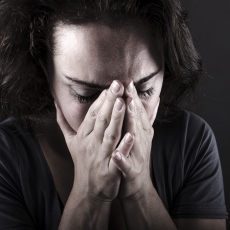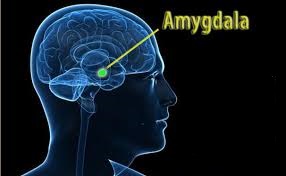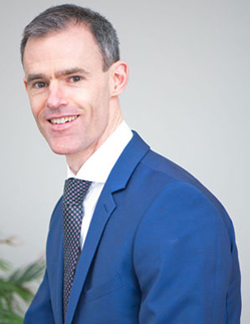Anxiety
 I had anxiety myself for many years. I know what it’s like . In my kinesiology practice I have treated hundreds of adults and children with anxiety.
I had anxiety myself for many years. I know what it’s like . In my kinesiology practice I have treated hundreds of adults and children with anxiety.
The feeling of anxiety is awful. It feels like someone is about to attack you even though there’s no-one there. Sometimes a sense of dread runs through you in waves. The waves can become so strong that you have to get away from everyone and try to recover yourself.
The worst part is not being able to control it. Especially for adults. When you know you are OK and safe and it’s totally irrational to feel this way – that makes it harder to take.
You’ll say to yourself; “What’s wrong with me?”, “Why am I so weak?”, “What the hell is this feeling about?”
I had anxiety at varying levels for years and in the process of becoming free of it, I’ve learned an awful lot about what it is and why its there and how to get out of it.
I think it’s extremely important to understand anxiety as a fight or flight response. We must look at the primal instincts in the brain that drive fear based activity, and figure out why it’s happening to you the individual.
Having worked at it for a long time now, there’s always a reason for it and always a way to change it.
What is anxiety?
This is the definition of anxiety I like best;
“Anxiety, a feeling of dread, fear, or apprehension, often with no clear justification. Anxiety is distinguished from fear because the latter arises in response to a clear and actual danger, such as one affecting a person’s physical safety. Anxiety, by contrast, arises in response to apparently innocuous situations or is the product of subjective, internal emotional conflicts the causes of which may not be apparent to the person himself. Some anxiety inevitably arises in the course of daily life and is considered normal. But persistent, intense, chronic, or recurring anxiety not justified in response to real-life stresses is usually regarded as a sign of an emotional disorder. When such an anxiety is unreasonably evoked by a specific situation or object, it is known as a phobia. A diffuse or persistent anxiety associated with no particular cause or mental concern is called general, or free-floating, anxiety.” (link to definition )
I had ‘free-floating’ or general anxiety for years. In my twenties I started learning to meditate, out of curiosity mostly and to see if it would help to make me calmer. After a number of months of practice it became apparent to me just how unsettled I was. I noticed that unless I was using a meditative technique like mindfulness, to maintain a calm state, I was not calm. While meditation helped me a lot, especially in gaining an understanding of myself and how to generally maintain equilibrium, at one point I became sick of having to do it all the time. I was in my mid twenties and most people I knew didn’t give a fig about meditation and practiced nothing even like it, yet they were far calmer than me in general. Meditation and mental health research
At one point my anxiety hit its peak and I started to get panic attacks. I was also coming in and out of depression. I had gone for counselling and psychotherapy – which was very helpful but didn’t really calm my body down. In spite of a regime of exercise, qigong (Read more), yoga and meditation, and good food my nervous system was ‘all over the place’. I couldn’t seem to control it.
At that time I was living in Australia and confided in a friend about the state I was in. They said they knew someone that practiced kinesiology and that I should give it a go. In short those treatments were life changing. After the first two treatments, I felt like my whole body calmed down. I often describe it as though my body was like a car stuck in 2nd gear, driving at 80 miles an hour all the time. The kinesiology work brought me to 3rd gear and then fourth, etc. Soon without any effort at all on my part, I was just nice and calm.
Now, for anyone that is used to feeling a bit anxious most of the time, suddenly feeling calm is dramatic and welcome. The changes I felt were so strong, I wanted to know how this was possible.
That led me to study and then practice kinesiology.
Signs and Symptoms of Anxiety
You’ve read the definition of anxiety above but for those who might not be clear about its effects on people, here are some of the signs and symptoms.
Here is what happens to your body if you feel anxious;
- Increased heart rate
- Shallow, fast breathing
- Stomach tension
- Bowel trouble
- Light headedness
- Dry mouth
- Poor sleep
At a psychological level;
- Poor concentration
- Feeling irritable and depressed
- Loss of self-confidence and self esteem
What causes anxiety?
In my experience the most significant causes are your personal history of stress and trauma, known and unknown. Including;
– Your life experiences
– How you were brought up
– Long term stress
– Shock
– Distress / shock from ages 0 – 3.
The last point is extremely significant. My own anxiety was resolved when a kinesiologist addressed very early trauma. I had almost died as a 6 month old baby from coeliac’s disease. The diagnosis was missed for several months and I became extremely ill. Obviously, I have no memory of this. But the amygdala – which is the survival brain’s General – is active from before 6 months in the womb and is linked to long term memory in ways that are much more primitive. I believe I was left in a sort of post-traumatic stress state. My body was producing huge levels of adrenaline all the time. I was nervous, fidgety, I couldn’t sit still, found it hard to focus and concentrate. I was emotionally sensitive and unsettled. For information about post traumatic stress click here
When I addressed this early trauma with kinesiology all of the background distress settled down. I became so much calmer I could hardly believe it.
So now when I work with people, I always look at their issues from this perspective. It’s not always factored into the overall understanding of their problem. And even sometimes when it is, there’s no solution provided.
Anxiety and the fight / flight response
I think it’s really helpful to view anxiety as a ‘stuck’ fight / flight response. In other words, a shock or trauma which caused the body to go into fight / flight has not yet released it’s hold. The Amygdala in the brain is responsible for the fight / flight response. Many of our automatic fear responses are controlled here. For example, it is what makes your body jump when you get a sudden fright. You can do nothing to control this type of reaction. If this area becomes overstimulated it will tend to stay this way. Triggers which are even slightly similar to those which caused the initial ‘fright’ will fire at inappropriate times.
How the Amygdala works – short video link
This is exactly the experience of anxiety. For no apparent reason you start to feel like you are in a threatening situation. And even though you know you are not, and you are telling yourself to calm down, it won’t always stop. The survival brain is hugely powerful and it’s trying to keep you safe. At times of anxiety it is perceiving danger and is trying to make you get away from it.
Kinesiology and anxiety?
Kinesiology offers a new way of using Traditional Chinese Medicine (TCM) techniques. TCM is all about restoring calm to the body and mind. If you’ve ever had a good acupuncture treatment you’ll have felt your body calming down.
I use a range of techniques including acupressure formatting, NOT (Neural Organisational Technique) and meditative visualizations to restore a sense of safety to the body. Because safety is what’s missing when anxiety is present.
Anxiety and Kinesiology
Anxiety is an awful thing to live with. It’s important to understand what’s happening when you have anxiety. The brain of an anxiety sufferer is registering very high fear levels and and is going into fight / flight mode. Generally this type of reaction has a historic trigger such as a shock or trauma. Very often these are unknown to the person experiencing the anxiety and this is why the feeling of fear makes no sense to them.
Fundamentally the person does not feel safe. And the key to any therapy that helps with the anxiety is to restore this feeling of safety again.
Kinesiology is a fascinating system that allows the practitioner to bring calmness or balance to the emotional states associated with the fight / flight response. When these are addressed the person generally feels significantly calmer. As a result a whole range of physical and emotional issues can come into balance.


